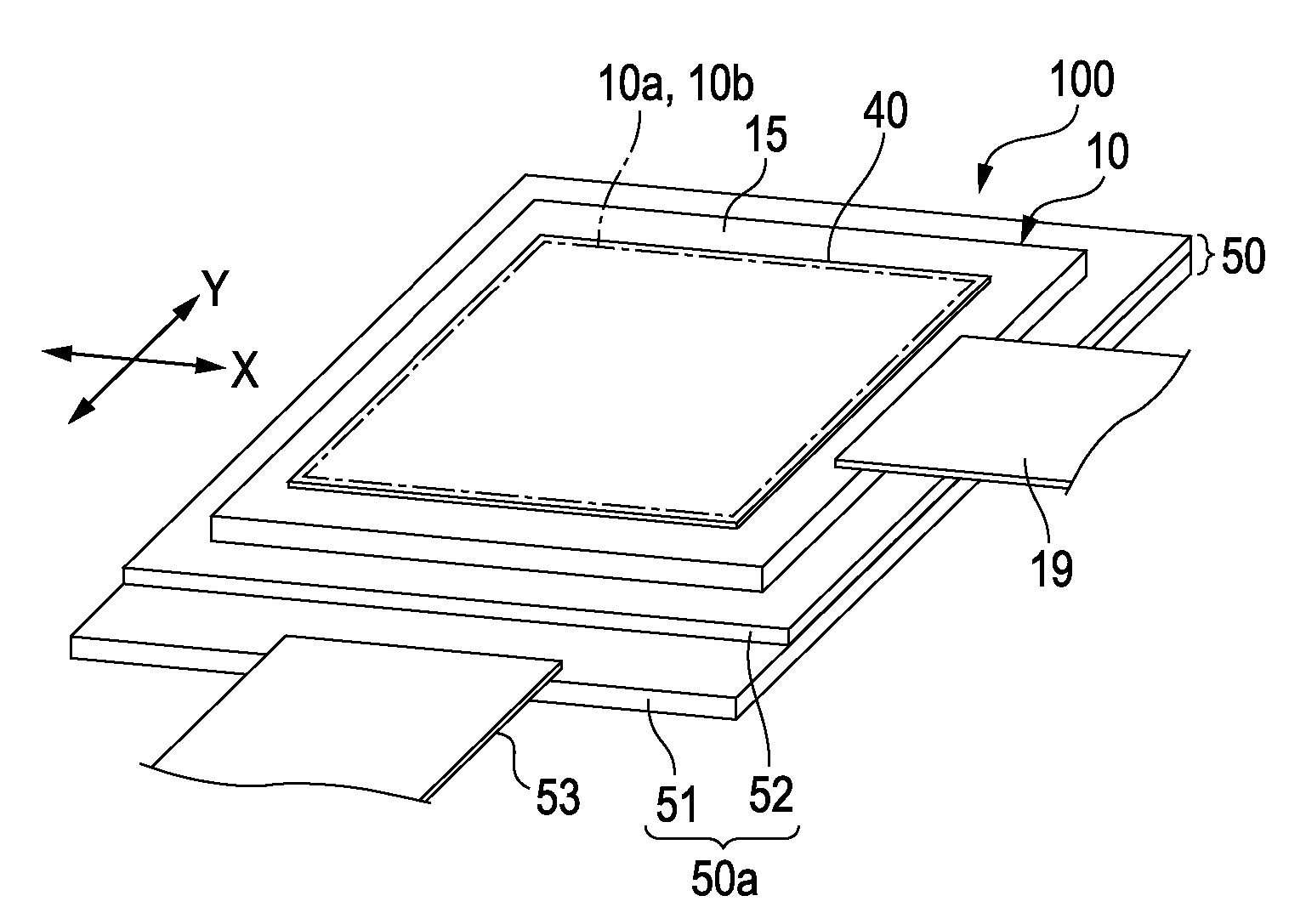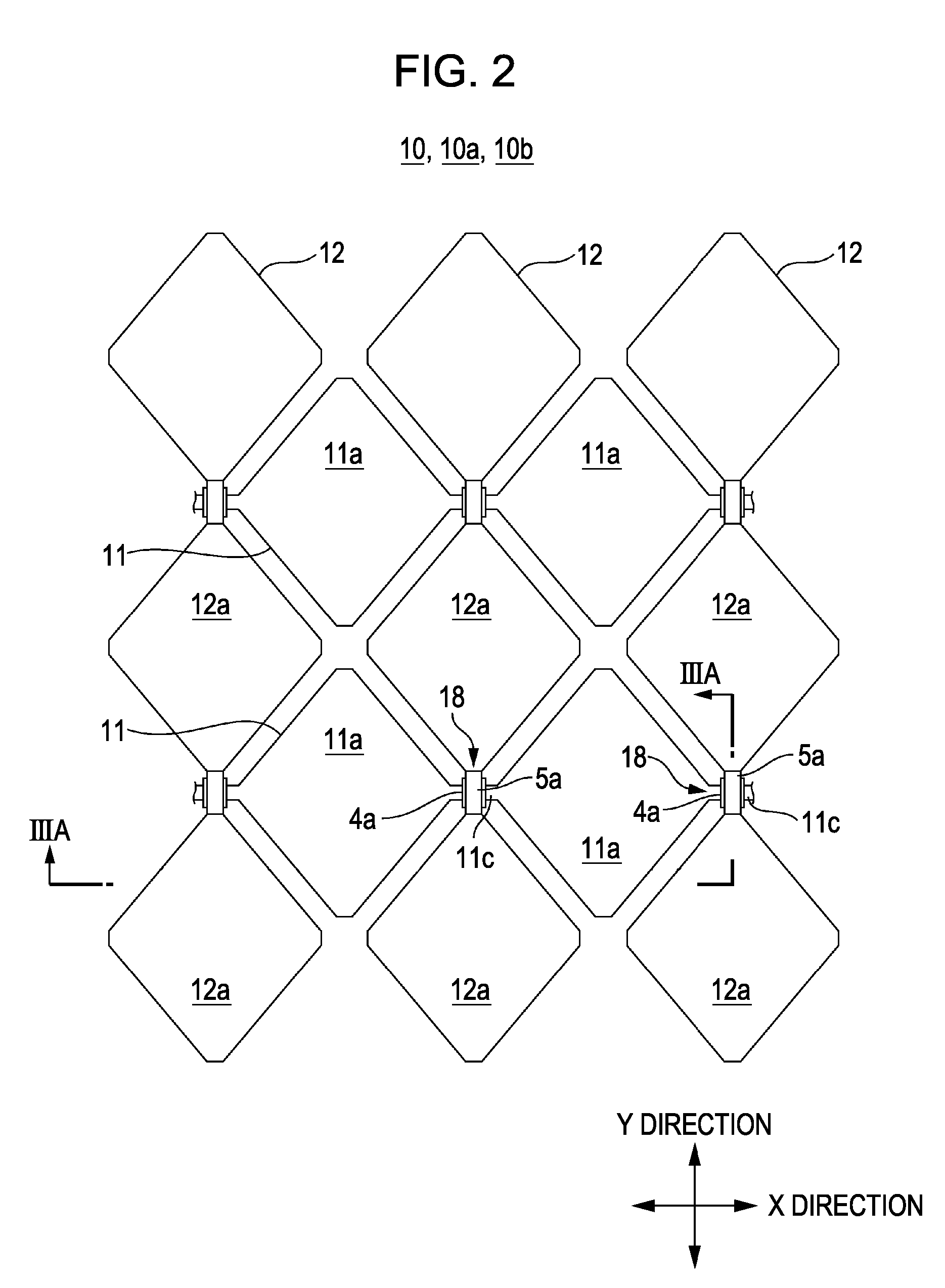Capacitive input device, display device with input function, and electronic apparatus
a technology of capacitive input and display device, which is applied in the direction of electric digital data processing, instruments, computing, etc., can solve the problems of large difference in reflectance between these regions, undetected presence of light-transmitting electrodes, and narrow operating temperature ranges, etc., to simplify manufacturing processes
- Summary
- Abstract
- Description
- Claims
- Application Information
AI Technical Summary
Benefits of technology
Problems solved by technology
Method used
Image
Examples
first embodiment
Entire Configuration
[0041]FIG. 1A is a drawing schematically illustrating a configuration of a display device with an input function according to the present invention. FIG. 1B is a drawing schematically illustrating a planar configuration of the display device with an input function shown in FIG. 1A. In FIG. 1B, a first light-transmitting electrode pattern (first light-transmitting electrodes) and a second light-transmitting electrode pattern (second light-transmitting electrodes) are simplified using solid lines, and the number of these light-transmitting electrodes is also decreased.
[0042]In FIG. 1A, a display device 100 with an input function according to this embodiment includes a liquid crystal device 50 serving as an image-forming device, and a panel-shaped input device 10 (touch panel) laminated on the display light emission side of the image-forming device. The liquid crystal device 50 is provided with a reflective or transflective active matrix-type liquid crystal panel 50...
second embodiment
Entire Configuration
[0118]FIG. 8 is a drawing schematically illustrating a planar configuration of a first light-transmitting electrode pattern and a second light-transmitting pattern formed in an input device according to a second embodiment of the present invention. FIG. 9A is a schematic sectional view of the input device according to the second embodiment of the present invention, taken along line IXA-IXA of FIG. 8. FIG. 9B is a sectional view showing a connection structure between a light-transmitting electrode pattern and a metal wiring. Since the basic components are the same as in the first embodiment, and common portions are denoted by the same reference numerals in the drawings and are not described below.
[0119]In FIG. 8 and FIG. 9A, like in the first embodiment, the input device 10 of the second embodiment includes a capacitive touch panel, and the first light-transmitting electrode pattern 11 including a plurality of electrode lines extending in a first direction and the...
PUM
 Login to View More
Login to View More Abstract
Description
Claims
Application Information
 Login to View More
Login to View More - R&D
- Intellectual Property
- Life Sciences
- Materials
- Tech Scout
- Unparalleled Data Quality
- Higher Quality Content
- 60% Fewer Hallucinations
Browse by: Latest US Patents, China's latest patents, Technical Efficacy Thesaurus, Application Domain, Technology Topic, Popular Technical Reports.
© 2025 PatSnap. All rights reserved.Legal|Privacy policy|Modern Slavery Act Transparency Statement|Sitemap|About US| Contact US: help@patsnap.com



